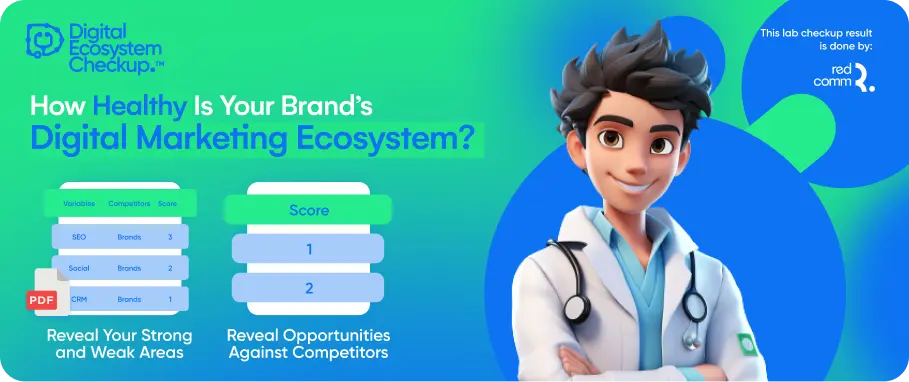If you're part of the 4.6 billion strong global social media community, chances are you're eyeing those platforms as more than just a way to share memes and cat videos.
5 Valuable Tips to Supercharge your Paid Social Media Strategy

The power of social media in growing your brand is undeniable, backed by recent research from Hootsuite and We Are Social indicating a continuous surge in social media ad spend.
This year alone, a whopping $154 billion will be invested in social media advertising, creating a fierce battleground for attention.
But fear not, with the right strategy, you can carve out your space in the paid social media realm.
Let's dive deep into the dynamic world of paid social media advertising and explore how you can craft a strategy that propels your brand into the spotlight and fuels its growth.
1. Establish Clear Goals and Utilize Demographic Targeting to Refine your Audience Focus
Whether you're aiming for heightened brand awareness, increased traffic, or a sky-high conversion rate, defining your objectives is your starting point.
Before launching any social media ad campaign, leverage your chosen platform to outline your parameters.
However, remember, success doesn't happen in isolation. Ensure your website and content are polished, landing pages are optimized, and you're collaborating seamlessly with your SEO and lead generation efforts.
A unified approach across marketing channels is the key to making a lasting impact.
For those well-versed in PPC, particularly within paid search, the concept of demographic targeting is not a novelty.
However, the exploration of over 2,000 demographics available for targeting on social media platforms like Facebook and Twitter might be a less-explored area.
This level of granularity surpasses the capabilities of Google Ads, offering a more precise means of identifying your specific audience.
While it's essential to target fundamental demographics such as age, location, and income, many social platforms enable you to delve deeper by also focusing on behaviors and life events.
This could include aspects like marital status, parenthood, or even individuals planning specific travel or events.
2. Choose your Platforms Wisely
Ever heard the saying about hanging out where your customers do? That's the golden rule when crafting your paid social media strategy.
But how do you choose the right platforms? If you've already built a robust presence on a specific platform, doubling down can enhance loyalty and encourage repeat business.
Alternatively, branching out to new platforms can broaden your brand's reach.
To make an informed decision:
- Delve into your buyer persona. What insights can you gather about your audience's attitudes and behaviors? Are there specific segments within your audience that you can target? Determine whether you're aiming for broad demographics or niche segments.
- Conduct research on platform usage. If you're targeting C-suite executives, LinkedIn might be your go-to platform, while TikTok may be better suited for boosting awareness among women aged 18-25. Abundant data is available to help align your chosen platform with your current and desired audience.
3. Harness the Influence of Keywords and Hashtags
While Facebook ads may not allow direct keyword targeting, Twitter provides an opportunity to optimize your content using keywords and hashtags.
It's essential to note that Twitter keywords should adopt a more casual and conversational tone compared to those used for Google search optimization.
Utilize natural language, embrace slang, and incorporate popular abbreviations like FOMO or YOLO.
Don't overlook the significance of hashtags. To identify trending topics, start by examining your competitors and their followers.
Targeting these specific hashtags can help you reach a highly focused and actively engaged audience.
4. Establish your Budget
The positive aspect is that paid social media advertising proves to be a cost-effective option.
However, the challenge lies in navigating the bidding/lottery system, requiring a delicate balance to achieve optimal ad placement without depleting your budget within the initial 24 hours.
Similar to PPC and paid search, once your budget is exhausted, so are your results. Ensure your budget is sufficient to cover the planned duration of your campaign.
Additionally, consider a useful tip: Platforms will charge your credit card as your budget is utilized.
If you've set strict spending limits, contemplate temporarily increasing them during the campaign to prevent disruptions due to card rejection and maintain campaign momentum.
5. Employ Data for Tracking, Measurement, and Optimization
The first step involves determining how to extract and analyze the wealth of data and analytics provided by a paid social campaign.
You can choose to utilize the advertising platform for a comprehensive dataset or option for a social media management platform that provides all the necessary data and also assists in extracting insights for campaign optimization.
When scrutinizing your data, it is imperative to compare organic social media efforts with paid campaigns while closely monitoring the return on investment (ROI).
Detecting any shortcomings in a paid campaign allows for informed decisions, such as adjusting copy, visuals, or CTA, altering targeting to reach a new audience, and promptly testing new advertisements.
Curious to explore more digital mastery? Check out these 4 Innovative Ways to Elevate Your PPC Strategy and Dominate the Digital Realm.
DISCOVER MORE OF WHAT MATTERS TO YOU
RELATED TOPIC



